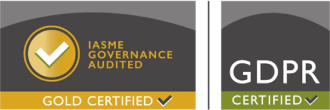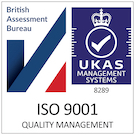
Posted: 22nd June 2022
To have comprehensive data backups is to ensure your critical data can survive anything and business can continue as normal with minimal downtime.
The traditional 3-2-1 rule for data backups
Historically, the biggest risk to data was a natural disaster or file corruption. The chances were slim, but the consequences were huge, so a data backup strategy was still imperative.
The 3-2-1 rule has been considered best practice in data backup strategies for many years. Here’s how it works:
– Keep 3 copies of everything: The primary version of the data, plus two backups.
– Store the backups in 2 different places: This could be the cloud, a server or local hard drive. The principle being the chances of both storage devices failing at one time would be unlikely.
– Ensure 1 copy is stored off-site: Fires, theft and floods can’t reach data stored on the cloud.
.
This method for data backups has worked well for a long time. However, times are changing and there are now more threats to data protection to be considered.
The improved 3-2-2 rule for data backups
Natural disasters and file corruptions are still a risk to critical data but a bigger threat these days is a ransomware attack.
Last year, a business fell victim to a ransomware attack every 11 seconds.
Unlike the probability of a natural disaster, you need to prepare your business for WHEN you are hit by a ransomware attempt, not IF. It’s this rapid growth in cyber crime that has prompted the evolution of the 3-2-1 rule.
Read more about ransomware and other common cyber attacks on businesses.
The 3-2-2 rule is designed to prevent successful ransomware attacks, reduce downtime in the event of a disaster and eliminate the risk of data loss. It looks like this:
– Keep 3 copies of everything: The primary version of the data, a synched version through One Drive or sharepoint, and a cloud copy secured through data protection backup software such as Veeam.
– Store the backups on 2 different cloud platforms (One Drive and Veeam): This strategy enables faster and easier disaster recovery.
– Store 2 copies of the data in the cloud: With this approach, your data is safe no matter what.
.
Introducing two cloud locations to your data backup strategy is key to minimising downtime. If ransomware encrypts files which then sync back to One Drive, time will need to be taken to recover the data. Introducing an additional solution such as Veeam cloud storage will provide Encrypted offsite backups with good retention.
If you’re unfortunate enough to still fall victim to a ransomware attack, Veeam’s cloud backups make it possible to revert to a version before encryption to ensure efficient business continuity.
Learn more about the cost of downtime for your business.
Be clear on your data recovery objectives
Recovery objectives are a vital metric for building your disaster recovery plan. Having a quantifiable metric of how much recovery time (Recovery Time Objective) and data loss (Recovery Point Objective) your business can tolerate will give you confidence in your recovery should the worst happen.
Here are some tips on how to set your RTO and RPO:
#1 Your RPO needs to match the frequency that your files are updated at the very least to minimise data loss.
#2 You can set different RPOs for different areas of your business. Departments handling more critical data may need an ‘always on’ approach to data backups.
#3 Your RTO should reflect the nature of your business. Those that rely on online transactions, for example, should aim to set an RTO of 1-2 hours max. While a paper-based organisation could probably withstand a day or two, if not more in extreme scenarios.
Be confident in your data backups
The cloud has opened a world of opportunities and we’re keen to give our clients the chance to take advantage.
We only partner with the best and most reputable providers to find you a cloud solution that will benefit your business. To learn more, drop us a line and we’ll be happy to talk you through how you can benefit from cloud services.








